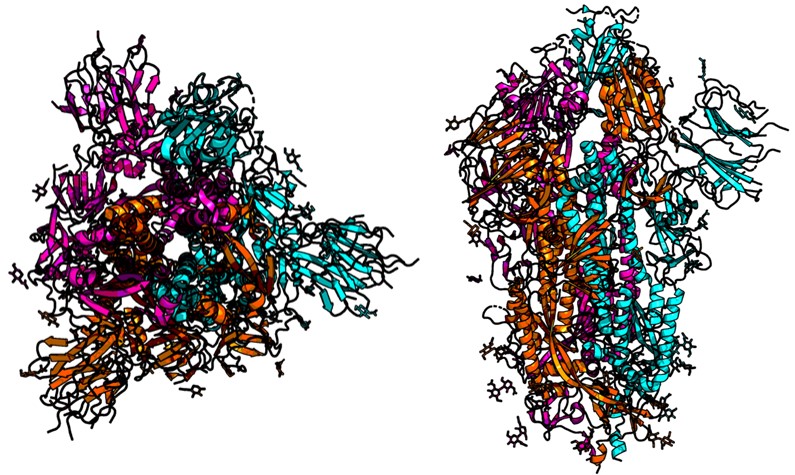SPS staff member playing a part in a large School of Biosciences project to tackle the coronavirus pandemic.
Dr Andrew Morrell from the School, has been working with a team from the School of Biosciences to develop a synthetic route and appropriate analytical methodology which ultimately may lead to a mechanism for disrupting Covid-9 viral binding to host cells.
Part of a large team effort led by Professors Mark Smales and Martin Warren, the project sees researchers in the School working to help generate a vaccine against coronavirus and at the same time are also providing support to a key company developing urgently required antigen and antibody tests.
“I am working with Dr David Beal – a Biosciences/SPS Sir Henry Wellcome Research Fellow – to synthesise, characterise and purify chemical linkers for attachment of COVID-19 proteins to pharmaceutical carriers. We have developed suitable analytical methods using Liquid Chromatography – Mass Spectrometry (LC-MS) and are in the process of purifying linkers for further synthetic studies using the Preparative High Performance Liquid Chromatography (prep-HPLC) instrumentation in Lab 2. This work has the potential to deliver a COVID-19 vaccine, as part of the wider Biosciences COVID-19 vaccine research team. I’m hoping we can make a difference, even if it is just identifying one small piece in a very large jigsaw puzzle!”
Dr Andrew Morrell
Using the School of Bioscience’s expertise in recombinant protein production, synthetic biology and bioinformatics, researchers have identified key antigen targets within the virus, developed and assembled constructs and will employ plug and play technology to help generate immune-responsive particles.
The project will continue to involve the pervasive expertise within the School as it develops. It is heartening that so much has been achieved already in such a short space of time, reflecting not only the skills of the School’s researchers but also the state-of-the-art equipment available to them. You can learn more about the project on the biosciences blog.

